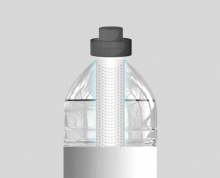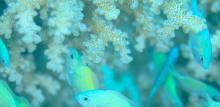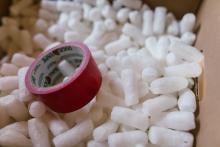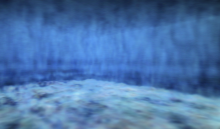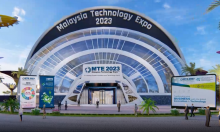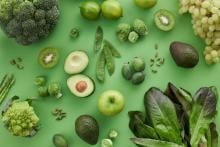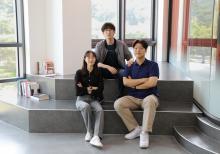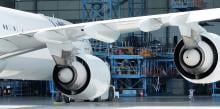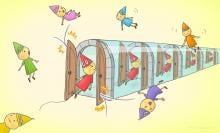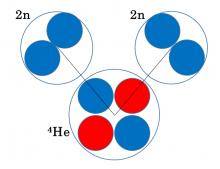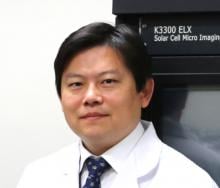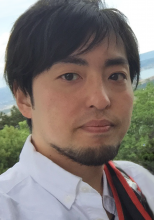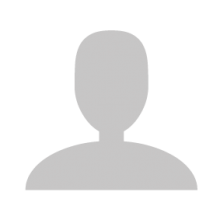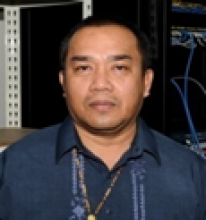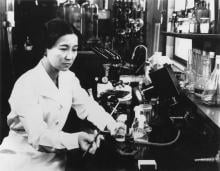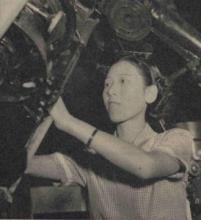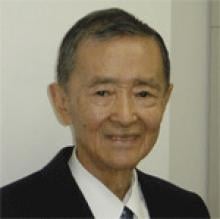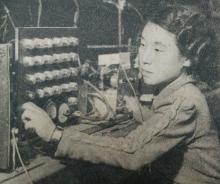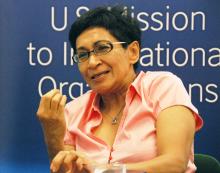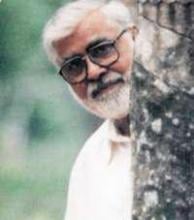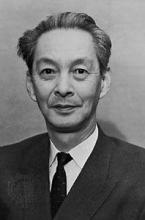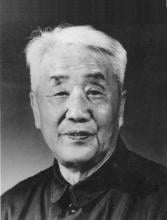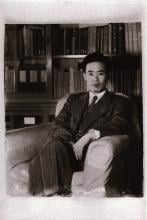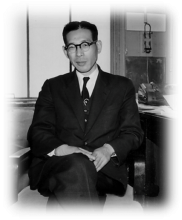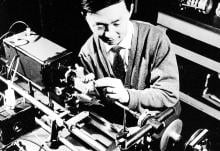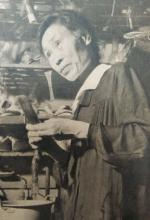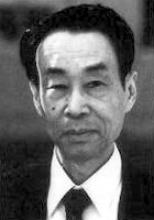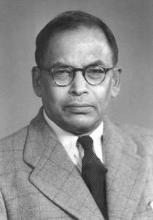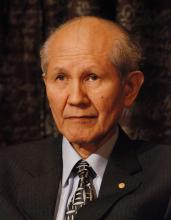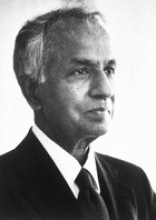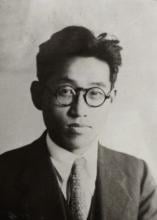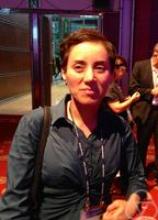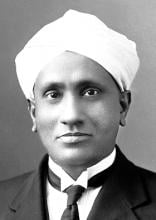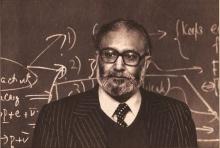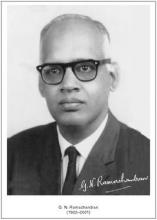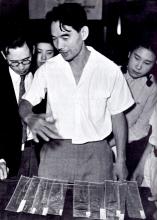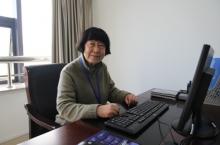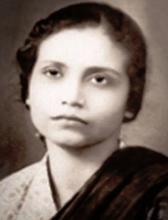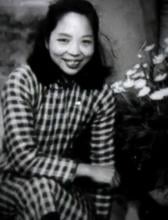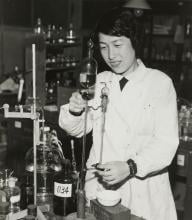Science
News
28 Aug 2023
Solid-state batteries are a safer option that can hold even more energy than current go-to lithium-ion versions, but effectively harnessing their structure-performance relationship has remained a complex barrier to better batteries. Now, however, researchers at Tohoku University’s Advanced Institute for Materials Research in Japan have developed a framework to predict how the structure of solid-state electrolytes can affect the performance of a battery.
23 Aug 2023
SLINTEC, Monash University Malaysia, and Newcastle University UK and Singapore teamed up for Poseidon: a patented portable water filtration device attachable to a bottle, offering clean drinking water for those lacking access.
23 Aug 2023
Quantum physicists have found that the outcomes of measurements are shaped by the complex dynamics of measurement interactions, questioning our usual understanding of observable reality.
23 Aug 2023
Researchers have identified a new pathway by which sugar is released by symbiotic algae. This pathway involves the largely overlooked cell wall, showing that this structure not only protects the cell but plays an important role in symbiosis and carbon circulation in the ocean.
23 Aug 2023
Associate Professor Taweechai Amornsakchai and his team of international researchers have developed novel bio-degradable rigid foams derived from pineapple waste, showcasing impressive properties. Starch and cellulosic materials are key components of the foams, which are processed via microwave gel formation and filler blending. The foams feature high strength, and rapid biodegradation, with potential for practical use from packaging, to construction, automotive, and aerospace.
22 Aug 2023
Researchers from SANKEN (The Institute of Scientific and Industrial Research) at Osaka University and two other universities used topological data analysis to improve the predictions of physical properties of amorphous materials by machine-learning algorithms. This may allow for cheaper and faster calculations of material properties.
21 Aug 2023
Deepak Verma from Chulalongkorn University and his international team of researchers are exploring ways to enhance chitosan using techniques like adding photosensitizers, dendrimers, and chemical modifications. They also surveyed the use of chitosan nanoparticles for medical purposes, notably wound dressings.
19 Aug 2023
Researchers at Kanazawa University report in STAR Protocols procedural details and tips for nanoendoscopy-AFM, for capturing images of nanoscale structures inside living cells.
19 Aug 2023
In a study recently published in the journal Nanoscale, researchers from Kanazawa University and AGC Inc. use three-dimensional atomic force microscopy to study the hydrated form and structure of commonly occurring oxide crystals.
18 Aug 2023
Researchers at Kanazawa University report in Nature Communications how calcium ions can block sodium ion channels located in cell membranes. Structural analysis and computer simulations made it possible to identify where and why calcium ions get stuck.
17 Aug 2023
Japanese fossil forest found, AI finds a way to people’s hearts, Language diversity and child social development & Supplement for kidney disease. Plus Submissions open for Asia Research News 2024. Read all in the latest Editor's Choice.
15 Aug 2023
Innovators from 10 Countries Compete for the Coveted Advanced Healthcare and Life Sciences International Innovation Awards at MTE 2023
11 Aug 2023
A team of scientists from Thailand and Malaysia, led by principal investigator, Associate Professor Taweechai Amornsakchai from Mahidol University, has successfully developed a low-cost and green method to make films prepared from pineapple stem starch for food packaging, such as fruits and vegetable.
10 Aug 2023
Hokkaido University researchers found that tiny nematode worm larvae surf electric fields to hitch rides on passing insects.
09 Aug 2023
Researchers from Osaka University clarified the interactions of the proteins Tejas (Tej), Vasa (Vas), and Spindle-E (Spn-E) in the formation of cellular compartments known as nuage and the processing of PIWI-interacting RNA (piRNA) precursors in Drosophila melanogaster ovaries. piRNAs help prevent the transmission of genetic mutations through reproductive cells, and insight into the dynamics of piRNA formation and processing may contribute to our understanding of the mechanisms underlying reproductive disorders, including infertility.
09 Aug 2023
A team led by researchers at Osaka University and University of California, San Diego has conducted simulations of creating matter solely from collisions of light particles. Their method circumvents what would otherwise be the intensity limitations of modern lasers and can be readily implemented by using presently available technology. This work might help experimentally test long-standing theories such as the Standard Model of particle physics, and possibly the need to revise them.
09 Aug 2023
- Student startup Quester is selected for the Tech Incubator Program for Startup (TIPS), expecting to bring technological innovation in hand-tracking gloves
- DGIST rises as a leading college startup incubator by producing excellent student startups for several years
09 Aug 2023
Rheology of hexagonal close-packed iron determined by high-pressure and high temperature deformation experiments
08 Aug 2023
Researchers at the Institute of Industrial Science, The University of Tokyo use computer simulations of glass-forming particles to discover a new type of exotic ordering impacting the fate of the material.
08 Aug 2023
Researchers from the Institute of Industrial Science, The University of Tokyo, provide physical insights into ion hydration in water-based solutions, which will aid electrolyte design for energy storage technologies.
07 Aug 2023
Researchers at Tohoku University and Massachusetts Institute of Technology (MIT) have unveiled new information about the anomalous dynamics at play when an electric current is applied to a new class of magnetic materials called non-collinear antiferromagnets.
06 Aug 2023
A team of researchers from Newcastle University of Singapore and National University of Singapore, led by Mr Loh Tick Boon, with academic supervisors Dr JJ Chong and Dr Kheng Lim Goh, has developed a novel and practical method of assessing the mechanical properties of structures, with potential application to structural health monitoring of large structures such as bridges and viaducts in Singapore.
06 Aug 2023
A team of researchers from Singapore and the UK, led by Dr Wei Liang Lai, with supervisor, Associate Professor Kheng Lim Goh, has developed a portable device for repairing hard-to-see damage in carbon fiber materials. The device has great potential for the aerospace industry, such as to repair the fuselage of commercial aircraft.
03 Aug 2023
The researchers from Osaka University showed how bone erosion caused by cholesteatoma occurs. This study showed that a subset of cells called osteoclastogenic fibroblasts expresses a protein, activin A, which causes the breakdown of the bones. Because of this discovery, novel medical treatments can be developed as first-line management for cholesteatomas.
02 Aug 2023
Soft metal-organic polymer networks can adsorb selected molecules from gas mixtures by opening pores when the molecules bind.
02 Aug 2023
Osaka Metropolitan University researchers have shown that within the helium-8 nucleus (with two protons and six neutrons), there are two clusters of two neutrons each, existing around the helium-4 core. Furthermore, they demonstrated the shape these clusters take. Nuclei with an imbalance of protons and neutrons, such as in helium-8, do not naturally exist on Earth but are believed to be abundantly generated in cosmic environments like the interiors of stars through the process of nucleosynthesis. This study’s findings provide new insights into the still largely unknown binding forms of neutrons and deepen our understanding of the origins of the elements that surround us.
01 Aug 2023
Researchers from Osaka University found that patients with persistently high levels of urinary albumin excretion in the long term are at high risk of new-onset heart failure. Preventive treatment associated with the lowering of urinary albumin excretion levels in these patients could reduce the risk of later heart failure or mortality.
31 Jul 2023
Researchers from Osaka University have demonstrated a proof-of-concept for identifying single nucleotides by using quantum computing. Molecular rotation patterns—and the corresponding variations in conductance—within the nanoscale gap between two electrodes enabled the development of a quantum gate for the nucleotide adenosine monophosphate. Developing quantum gates for the other three nucleotides, and incorporating this technology into DNA sequencing workflows, could revolutionize genome analysis.
31 Jul 2023
Enantioselection with neither chiral catalysis nor chiral ingredients (absolute enantioselection) has been one of the most active topics of interest but its experimental realizations have been challenging. A team led by researchers at the Institute for Molecular Science (IMS) demonstrated the enantioselectivity of helical supramolecules consisting only of achiral molecules solely by exploiting chiral-induced spin selectivity (CISS) effect. The helicity of the supramolecules is created not by microscopic molecular arrangements but by mesoscopically introduced dislocations. Now CISS effect has been revealed to be relevant for the wider class of chirality ranging from microscopic to mesoscopic length scales.
28 Jul 2023
Newcastle University (UK) and the Energy Research Institute at Nanyang Technological University hosted a UK-Singapore symposium funded by the UK Government in April 2023. It aimed to foster partnerships and research for widespread electric vehicle adoption. The event featured discussions on technology, economics, and policy over three days, encouraging joint collaboration in advanced electric transport research and commercialization.
Events

25 Sep 2015
Innovations in Cancer Research and Regenerative Medicine

22 Oct 2015
Asian Information Platform Leadership for Global Challenges, Daejeon, Korea, October 22, 2015

04 Jul 2016
Energy Future Conference 2016 (EF2016) is Australia's largest global energy event in Australia gathering industry and academia. EF 2016 will focus on Energy Storage: from generation to distribution. Program will features plenary lectures, panel discussions, specialized workshops, interactive poster presentation and exhibitions.
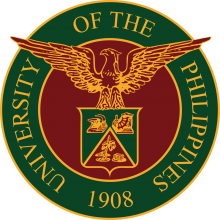
15 May 2015
Paliwanagan sa UP Diliman 2015
Quezon Hall Lobby
15 May 2015
5:00-8:00 PM

25 May 2015
This international symposium brings together world-class scientists in biology and chemistry, including, Dr. Ashraf Brik (Technion-Israel Institute of Technology, Israel) and Dr. Feng Zhang (Broad Institute of MIT and Harvard, USA).

19 Nov 2015
Select Biosciences South East Asia and the Singapore Institute of Manufacturing Technology (SIMTech) are pleased to present the Third Annual Lab-on-a-Chip Asia Conference and Exhibition, focusing on Microfluidic Technologies and Point-of-Care Diagnostics, with a pre-event Training Course hosted by the Microfluidic ChipShop on the 18th November.

20 May 2015
TATAA Biocenter, Sweden, the world’s largest provider of hands-on training in qPCR and Europe's leading provider of nucleic acid analysis services by qPCR, team up with Select Biosciences South East Asia to present a Full Day Training Course

22 Apr 2015
Protection, Preservation, Restoration and Sustainability of Environment and Water

20 Oct 2015
international agencies to present and exchange expertise of all regional aspects of Biological Control, including recent development related to environment – friendly pest management strategies

25 Jul 2015
2 Day Jojoba State of Art International Workshop
For an Innovative, Sustainable & Profitable Jojoba Industry around the World

21 May 2015
Select Biosciences South East Asia is pleased to present Advances in qPCR and dPCR.

09 Jul 2015
The event will take place at the Nanyang Executive Centre, Nanyang Technological University, Singapore on the 9-10 July 2015.

26 Feb 2015
The Singapore Bioimaging Consortium and Select Biosciences South East Asia present the Clinical Applications
of Stem Cells. Taking place on the 26-27 February 2015, at Academia, a state-of-the-art conference facility housed in the
campus of Singapore General Hospital, Singapore.

10 Nov 2014
Masdar Institute Faculty and Students to Showcase Research Capabilities and Explore Collaborations in Statistical Hydro-climatology

30 Oct 2014
The Photonics Institute (TPI) Opening Ceremony and International Photonics Workshop are taking place on 30-31 Oct 2014 at NTU Singapore. All are welcome to attend.

20 Nov 2014
Select Biosciences South East Asia is pleased to present the second annual Lab-on-a-Chip Asia conference and exhibition, focusing on Microfluidic technologies with particular reference to Point-of-Care Diagnostics.

28 Nov 2014
Kish Island, Iran, 28th November – 1st December 2014

27 Oct 2014
The Singapore International Energy Week (SIEW) is an annual week-long platform for energy professionals, policymakers and commentators to discuss and share best practices and solutions within the global energy space.
21 Oct 2014
GREEN Open Seminar will be held on 21st October, 2014, to have a lecture by Dr. Hiroaki Benten, Assistant Professor, Department of Polymer Chemistry, Kyoto University.

03 Oct 2014
Paliwanagan sa UP Diliman is a biannual activity of the Office of the Vice-Chancellor for Research and Development (OVCRD).

27 Oct 2014
The Nagoya Medal Award is awarded every year to two organic chemists who have made significant original contributions to the field. This year’s Gold Medal is awarded to Professor John F. Hartwig of the University of California, Berkeley, USA and the Silver Medal is awarded to Prof. Itaru Hamachi of Kyoto University, Japan.

22 Aug 2014
A combined event of the 28th Scientific Meeting of The Malaysian Society of Pharmacology & Physiology (MSPP), the 13th Symposium on Vascular Neuroeffector Mechanisms (VNEM), the 6th Scientific Meeting of The Asian Society for Vascular Biology (ASVB) and The Malaysian Society of Hypertension (MSH).

11 Sep 2014
Select Biosciences South East Asia is delighted to announce that our Enabling Genomic Technologies and Screening Asia Conference and Exhibition will take place at the Biopolis, Singapore on the 11th and 12th September 2014.

24 Jul 2014
This is the 7th Distinguished Technopreneur Speaker Forum organized by A*STAR's Exploit Technologies Pte Ltd (ETPL), Singapore

24 Jul 2014
The event will present the leading international scientists and thought leaders within this rapidly developing field.

02 Sep 2014
The 2014 I4CT will be held in Langkawi Island, Malaysia in September 2014. Sponsored by the Malaysia chapter of the IEEE Computer Society, this conference will feature a comprehensive technical program including numerous tracks and prominent keynote speakers.

24 Jun 2014
Conference, Competition and Exhibition 2014 (CCE2014) will be held in Politeknik Seberang Perai, Penang, Malaysia from June 24-25, 2014.

12 May 2014
The 2nd International Symposium on Transformative Bio-Molecules 2014 is an annual event held by the ITbM, inviting prestigious speakers from around the world to enhance interdisciplinary research between molecular synthetic chemistry and plant biology.

05 May 2014
The conference will be in collaboration with Sudan Ministry of Science and Communication and Africa City of Technology (ACT) highlighting the successes and contribution of women in science and technology development in the Arab world.
Researchers
National Institute for Materials Science (NIMS)
Current: Deputy and Administrative Director & Principal Investigator of International Center for Materials Nanoarchitectonics (WPI-MANA) .
Professor at the Graduate School of Pure and Applied Sciences, University of Tsukuba
Daegu Gyeongbuk Institute of Science and Technology (DGIST)
Prof. SU-IL IN has been working at DGIST (Daegu Gyeongbuk Institute of Science & Technology) since 2012. He served as Dean of International and External Affairs 2016 ~ 2017. He received his Ph.D. in Chemistry from University of Cambridge in 2008. Subsequently he was a postdoctoral researcher at Technical University of Denmark by 2010. Then he joined the Pennsylvania State University as a postdoctoral researcher in the Department of Chemistry before joining DGIST. Professor In’s current researches include synthesis and analysis of functional nano (bio)-materials for environmentally friendly renewable energy such as photovoltaic, heterogeneous catalysis and biocatalysts. (https://insuil.dgist.ac.kr/)
Aamir Jalal Al Mosawi is advisor in pediatrics and pediatric psychiatry at the Children Teaching Hospital of Baghdad Medical City.
Nagoya University
Dr. Omachi is Associate Professor, Research Center for Materials Science, Nagoya University
Universiti Putra Malaysia (UPM)
Currently Associate Professor at Universiti Putra Malaysia. Holds a PhD from University College of Wales and BSc (Hons) Genetics from the University of Liverpool
Professor and Head of Microbiology and Immunology Department,
Faculty of Medicine, Lincoln University College (LUC) Malaysia.
Professor in Agriculture and Education in the Iloilo Science and Technology University Leon Campus (ISAT U). Leon, ILOILO, PHILIPPINES
Giants in history
Chinese biochemist Chi Che Wang (1894 - 1979), one of the first Chinese women to study abroad, advanced to prominent research positions at American institutions including the University of Chicago and the Northwestern University Medical School.
Ruby Sakae Hirose (1904 – 1960) was a Japanese-American scientist whose research contributed significantly to our understanding of blood clotting, allergies and cancer.
Chinese electron microscopy specialist Li Fanghua (6 January 1932 – 24 January 2020) facilitated the high-resolution imaging of crystal structures by eliminating interference.
Sálim Moizuddin Abdul Ali (12 November 1896 – 20 June 1987), commonly referred to as the Birdman of India, was the first person to conduct systematic surveys of birds from across India.
Haisako Koyama (1916 – 1997) was a Japanese solar observer whose dedication to recording sunspots – cooler parts of the sun’s surface that appear dark – produced a sunspot record of historic importance.
Michiaki Takahashi (17 February 1928 – 16 December 2013) was a Japanese virologist who developed the first chickenpox vaccine.
Toshiko Yuasa (11 December 1909 – 1 February 1980) was the first Japanese female physicist whose research on radioactivity shed light on beta decay – the process in which an atom emits a beta particle (electron) and turns into a different element.
Angelita Castro Kelly (1942-2015) was the first female Mission Operations Manager (MOM) of NASA. She spearheaded and supervised the Earth Observing System missions during its developmental stage.
Malaysia’s first astrophysicist, Mazlan binti Othman (born 11 December 1951) was instrumental in launching the country’s first microsatellite, and in sending Malaysia’s first astronaut, Sheikh Muszaphar Shukor, into space.
Known as Mr. Natural Rubber, chemist and researcher B. C. Shekhar (17 November 1929 – 6 September 2006) introduced a number of technical innovations that helped put Malaysia’s natural rubber industry on the world map.
Shinichiro Tomonaga (31 March 1906 – 8 July 1979), together with Richard Feynman and Julian Schwinger, was awarded the Nobel Prize in Physics in 1965, for their contributions to advance the field of quantum electrodynamics. Tomonaga was also a strong proponent of peace, who actively campaigned against the proliferation of nuclear weapons and promoted the peaceful use of nuclear energy.
South Korean theoretical physicist Daniel Chonghan Hong (3 March 1956 – 6 July 2002) achieved fame in the public sphere through his research into the physics of popcorn.
Japanese chemist Kenichi Fukui (4 October 1918 – 9 January 1998) was the first Asian scientist to be awarded the Nobel Prize in Chemistry. Together with Roald Hoffman, he received this honour in 1981 for his independent research into the mechanisms of chemical reactions.
Chinese palaeontologist, archaeologist and anthropologist Pei Wenzhong (January 19, 1904 – September 18, 1982) is regarded as a founder of Chinese anthropology.
Physicist Narinder Singh Kapany (31 October 1926 – 4 December 2020) pioneered the use of optical fibres to transmit images, and founded several optical technology companies. Born in Punjab, India, he worked at a local optical instruments factory before moving to London for PhD studies at Imperial College. There, he devised a flexible fibrescope to convey images along bundles of glass fibres.
Japanese physicist Ukichiro Nakaya (1900-1962) made the world’s first artificial snowflakes. He started his research on snow crystals in the early 1930s at Hokkaido University, where there is an unlimited supply of natural snow in winter. By taking over 3,000 photographs, he established a classification of natural snow crystals and described their relationship with weather conditions.
The field of solid-state ionics originated in Europe, but Takehiko Takahashi of Nagoya University in Japan was the first to coin the term ‘solid ionics’ in 1967. ‘Solid-state ionics’ first appeared in 1971 in another of his papers, and was likely a play on ‘solid-state electronics’, another rapidly growing field at the time.
Charles Kuen Kao (Nov. 4, 1933 to Sept. 23, 2018) was an engineer who is regarded as the father of fibre optics. His work in the 1960s on long distance signal transmission using very pure glass fibres revolutionized telecommunications, enabling innovations such as the Internet.
Chika Kuroda (24 March 1884 – 8 November 1968) was a Japanese chemist whose research focussed on the structures of natural pigments.
Motoo Kimura (13 November 1924 – 13 November 1994) was a Japanese theoretical population geneticist who is best remembered for developing the neutral theory of molecular evolution.
Meghnad Saha (6 October 1893 – 16 February 1956) was an Indian astrophysicist best known for formulating the Saha ionization equation which describes the chemical and physical properties of stars.
Sir Jagadish Chandra Bose (30 November 1858 – 23 November 1937) was a scientist and inventor who contributed to a wide range of scientific fields such as physics, botany and biology.
Osamu Shimomura (27 August 1928 – 19 October 2018) was a Japanese organic chemist and marine biologist who dedicated his career to understanding how organisms emitted light.
Subrahmanyan Chandrasekhar (19 October 1910 – 21 August 1995) was an Indian astrophysicist who studied the structure and evolution of stars.
Joo-myung Seok (November 13, 1908 – October 6, 1950) was a Korean butterfly entomologist who made important contributions to the taxonomy of the native butterfly species in Korea.
Mathematician Maryam Mirzakhani (12 May 1977 – 14 July 2017) was the first and only woman and Iranian to date to win the Fields Medal in 2014 for her work on curved surfaces.
Sir Chandrasekhara Venkata Raman (7 November 1888 – 21 November 1970) was an Indian physicist who performed ground-breaking research in the field of light-scattering.
Mohammad Abdus Salam (29 January 1926 – 21 November 1996) was a theoretical physicist and the first Pakistani to receive a Nobel Prize in science.
Srinivasa Ramanujan (22 December 1887 – 26 April 1920) was a math prodigy and widely considered one of India’s greatest mathematicians. Despite having almost no formal training in mathematics, he made substantial contributions to mathematical analysis, number theory, infinite series and continued fractions.
Gopalasamudram Narayanan Ramachandran (8 October 1922 – 7 April 2001) is best known for developing the Ramachandran plot to understand the structure of short chains of amino acids, known as peptides.
Hitoshi Kihara (1893 – 1986) was one of the most famous Japanese geneticists of the 20th century. One of his most significant contributions was identifying sex chromosomes (X and Y) in flowering plants.
Chien-Shiung Wu (31 May 1912 – 16 February 1997) was an experimental physicist who made several important contributions to nuclear physics. Wu worked on the Manhattan Project – a top-secret program for the production of nuclear weapons during World War II and helped to develop a process for separating uranium into U235 and U238.
Meemann Chang (born 17 April 1936) is a Chinese palaeontologist who studied the fossils of ancient fish to understand the evolution of life. By examining fossils, she uncovered new insights on how vertebrates, animals with a backbone, migrated from the sea and became adapted to live on land.
Bibha Chowdhuri (1913 – 2 June 1991) was an Indian physicist who researched on particle physics and cosmic rays. In 1936, she was the only female to complete a M.Sc. degree at the University of Calcutta.
Lin Lanying (7 February 1918 – 4 March 2003) was a Chinese material engineer remembered for her contributions to the field of semiconductor and aerospace materials. Lanying was born into a family who did not believe in educating girls and she was not allowed to go to school.
Japanese geochemist Katsuko Saruhashi developed the first method and tools for measuring carbon dioxide in seawater



